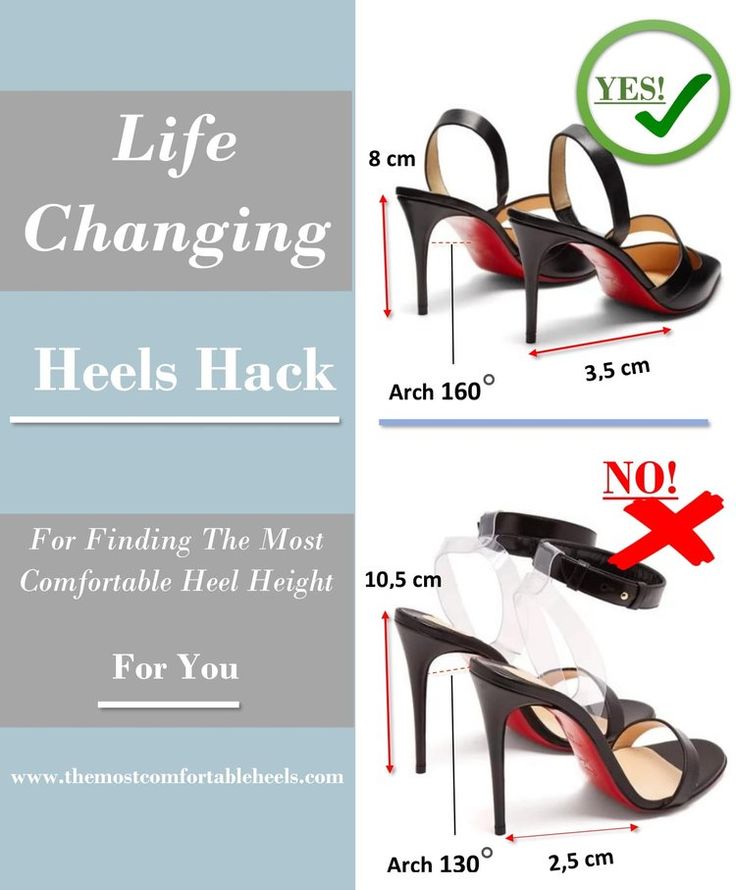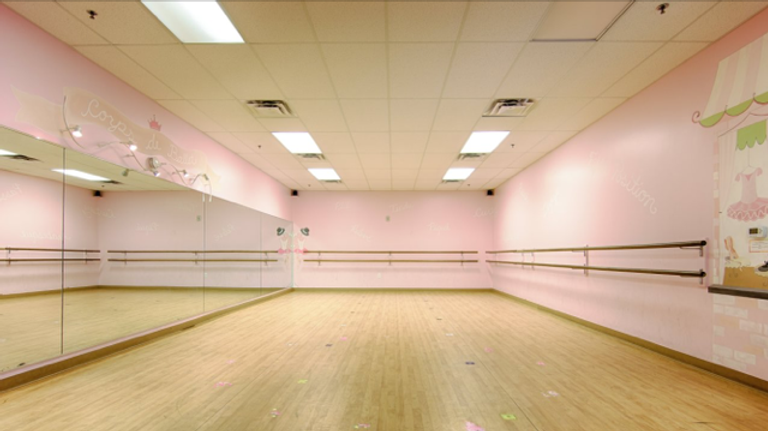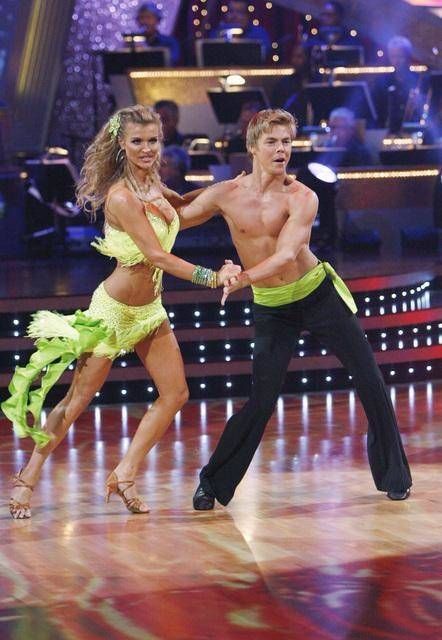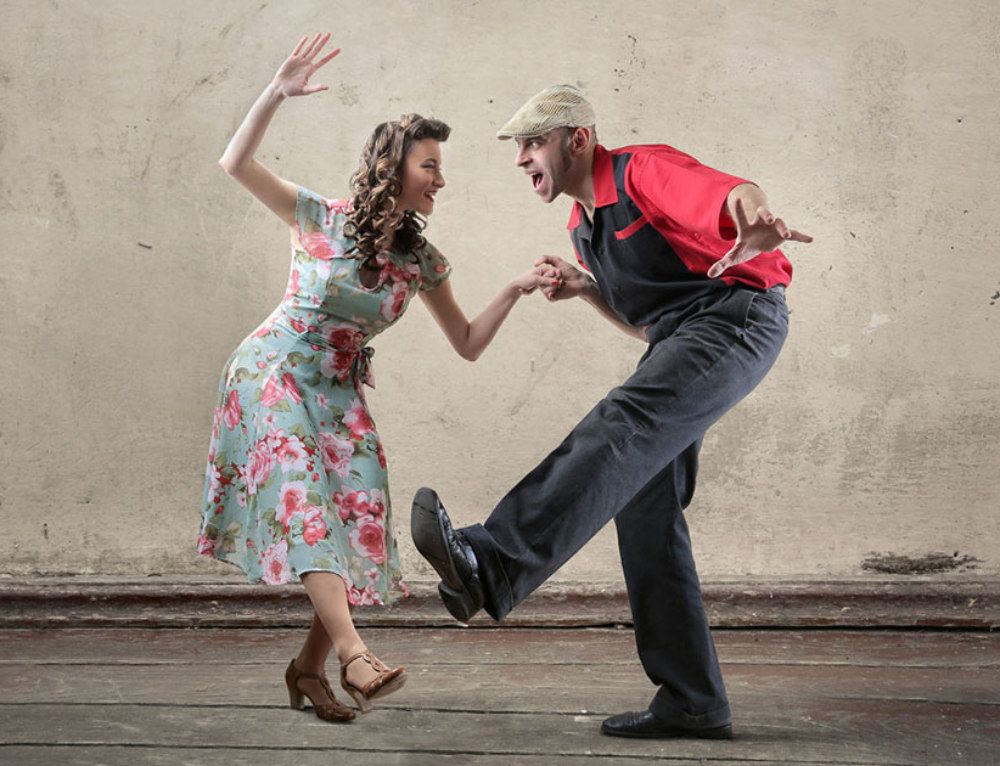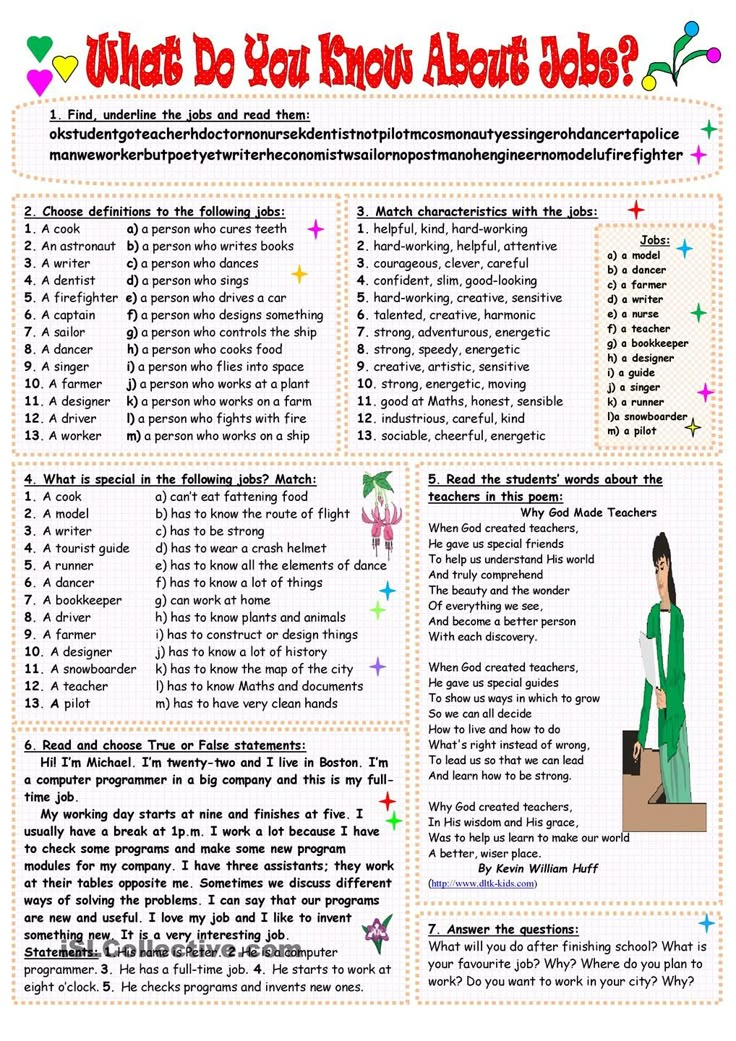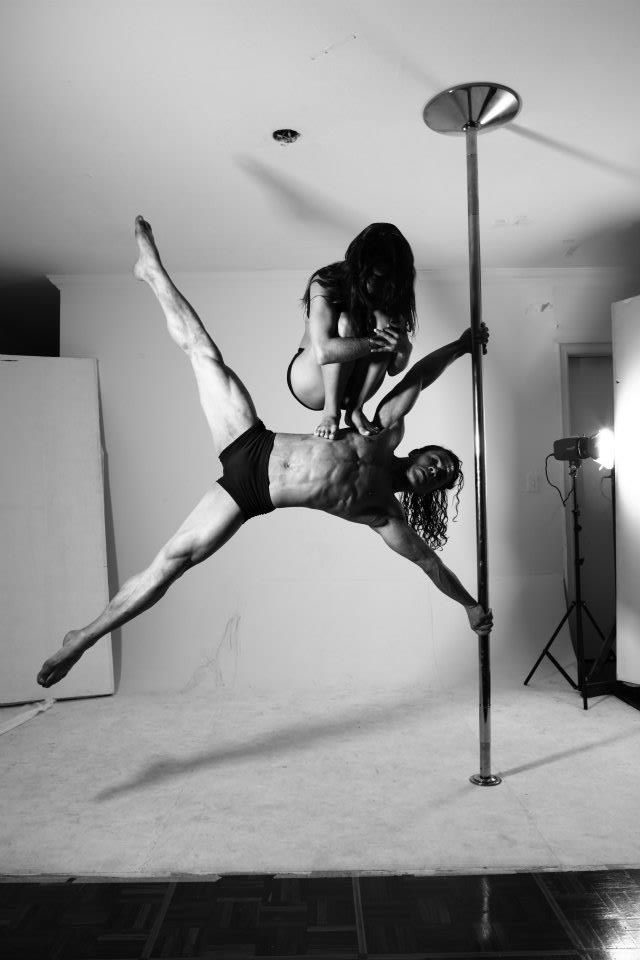How to dance in heels comfortably
6 Tips to Help You Dance in Heels Longer – Yami Dance Shoes
Dancing in heels is painful - especially if you’re not used to wearing heels in the first place! But if you want to become a better dancer, you have to train yourself to dance in heels comfortably. The thing is, not everyone is like Beyoncé who seems to be born wearing heels while dancing, there will be foot pain!
Why Wearing Heels HurtsOne of the reasons why high heels are so painful to wear is the way these shoes shift the body weight to the balls of your feet. The shift puts more pressure on the forefoot and the pain is heightened on the pad of the feet because of peak impact every single time you take a step.
Add the fact that the shape of the shoes themselves constrict the toes. Most high heel shoes have a narrow shape and when you wear the shoes, the foot is pinched forward because of the shift in body weight.
Wearing high heels does not affect the feet alone. It also affects the ankles, legs, spine, and hips. Wearing high heels makes the ankles and legs unstable, akin to standing on your tippy-toes. This puts a strain on the ankle and calf muscles. It also stiffens the Achilles’ heel that connects to the calf muscles. The height also weakens the arches. To dance in high heels, the ankles and legs must remain stable to maintain balance.
The pressure causes the bones in the foot to mold into the shoe despite the narrow space, causing pain and eventually, bone distortion of the toes (bunions, hammertoe, osteoarthritis in the feet, etc.)
Your posture is also affected when you wear high heels. High heels push the body forward. As a way to correct its balance, the body pushes the chest and lower back forward, hips are pushed back. This posture gives you a lovely silhouette but it's unnatural so the spine is misaligned, causing undue stress to the lower back and muscles.
How to Dance in Heels Longer without PainThankfully, there are ways to ease foot pain from dancing in high heels! To save your feet from forefoot pain, try these tips:
Choose Your Shoes Wisely
There is a reason why dance shoes were created, these shoes are designed specifically for dancers. Unlike ordinary heels, dance shoes like Latin dance shoes are meant to make dancing less stressful (and painful!) to the feet. The design and components are meant to optimize freedom of movement without the pain.
Unlike ordinary heels, dance shoes like Latin dance shoes are meant to make dancing less stressful (and painful!) to the feet. The design and components are meant to optimize freedom of movement without the pain.
For example, the dances shoes could be customized to fit wide or narrow feet for more comfortable wear. The materials are flexible to minimize constriction and boost movement. The soles are crafted from suede or microfiber so you can execute your routine without the pain!
A great example of this would be our very own Yami Shoes. Each pair boasts of steady heels, sturdy heel cups, a mid-level shoe shank, arch support, and of course, built-in cushions. All these components are designed to help you dance in heels for hours without pain. The inner soles are crafted from hypoallergenic microfiber to minimize odors. On top of that, we use flexible yet durable materials like vegan leather, flock, and PU for the dancing shoes.
These materials are not only animal-friendly, they’re also more comfortable to wear than leather material and low maintenance to boot! Vegan leather, for example, may be thinner than genuine leather but it’s just as resistant to cracking and tearing.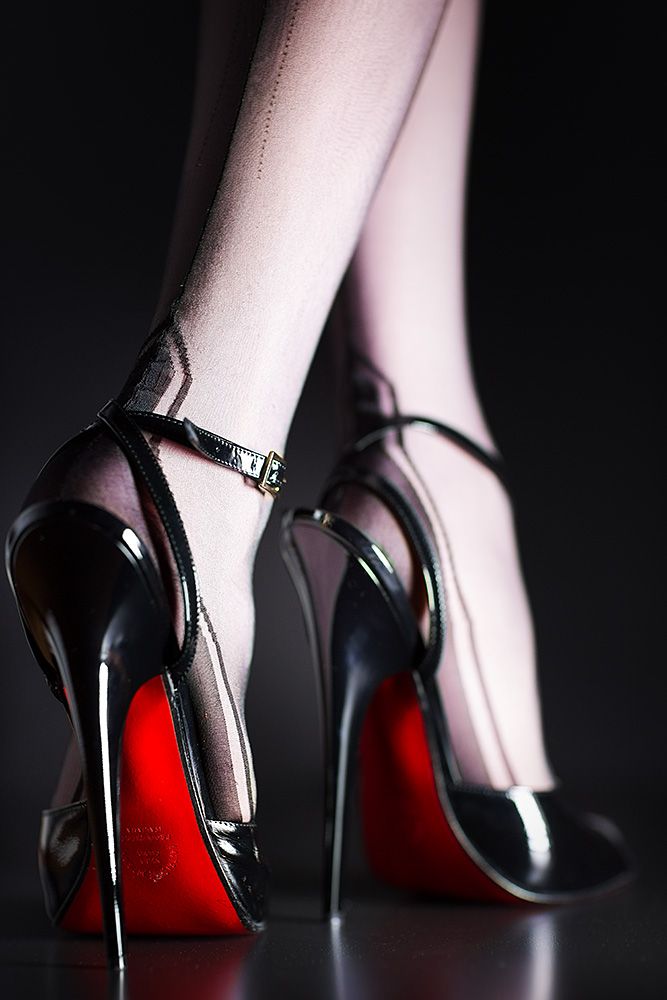 No babying required to make a pair of Yami heels last. And unlike genuine leather, vegan leather is thinner, more flexible, it allows total freedom of movement.
No babying required to make a pair of Yami heels last. And unlike genuine leather, vegan leather is thinner, more flexible, it allows total freedom of movement.
Different shoe designs have their own pros and cons. Ultimately, you want a pair of dance shoes that you are most comfortable (and confident) in wearing regardless of the heel height. Choosing high heels that are made specifically for dancing will definitely make a world of difference on your feet compared to regular heels.
Heel Height: Start Low
Being used to wearing high heels does not come naturally, you have to train yourself to walk - and eventually dance - in high heels. Wearing heels, in the beginning, is painful because every inch adds about 25% of your body weight to the balls of your feet.
If say, you are wearing a pair of 3-inch dancing shoes, 75% of your body weight is added to the balls of your feet! The forefoot takes the brunt of the added bodyweight with every step.
Unfortunately, there is no real way of speeding up the process when it comes to wearing and dancing in heels comfortably. You have to build muscle strength and flexibility in the feet, ankles, and legs gradually so you can dance in heels without pain.
Wearing low-heeled dance shoes is a great start if you’re new to dancing and/or you’re not used to dancing in heels. Once you’ve become accustomed to dancing at this heel height, you can increase the height to half an inch to a full inch. Increase the heel height until you’ve become comfortable wearing your desired dancing heels.
Go for the Extra Padding
Dance shoes with built-in padding like Yami dance shoes are perfect for dancing for long hours because of the extra cushion. Because high heels shift the body weight to the pads of the feet, the forefoot becomes strained and painful. The built-in cushions help spread the bodyweight evenly. The extra padding also absorbs peak impact so every step doesn’t feel like fire on the feet.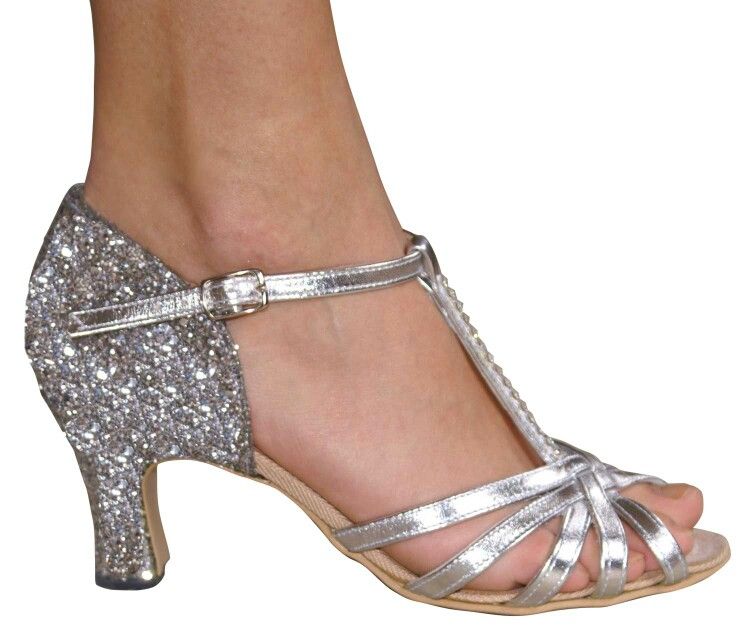 Also, the insoles are made of hypoallergenic microfiber so the shoes do not develop bad odors despite the hours you spend dancing in your Yami heels.
Also, the insoles are made of hypoallergenic microfiber so the shoes do not develop bad odors despite the hours you spend dancing in your Yami heels.
If your Latin dance shoes do not come with built-in cushions, we suggest investing in high-quality padded insoles. These are inserts that attach to the bottom of the shoe’s footbed to minimize peak impact and optimize comfort. However, the constant movement could cause the inserts to detach from the shoe bed, something to think about when looking for the perfect pair of Latin dance shoes.
Check Your Foot Shape
Comfort is important when choosing any kind of shoes. You want a pair of Latin dance shoes that are designed perfectly for your foot shape. Before investing in a pair of dance shoes, check your foot shape. Do you have a narrow or wide heel? Do you have high or low arches? Are your toes thin and long or short? All these factors will come into play when it comes to the wear of the dance shoes.
Here at Yami, Shoes, we have dance shoes for narrow, normal, and wide feet. We’re also happy to answer questions related to your foot shape so you’ll get the best shoe style that suits your foot shape.
Be Mindful of Every Step You Take
One of the reasons why dancing in heels is painful is that not a lot of people are mindful of how they walk in heels. The feet hurt in heels because the weight is concentrated in a small area of the foot. Now add the heel height into the equation. When you walk, the added weight crushes the forefoot, leading to muscle pain and gradually, bone distortions.
Simply put, the way the foot falls on the ground with each step affects the pads of the feet as well as the arches or the inner sides of the feet.
So be extra careful on how you use your feet, think of your high heels as extensions of the legs. Be sure that your weight is not resting solely on the forefoot, it should be distributed on the ball of the feet.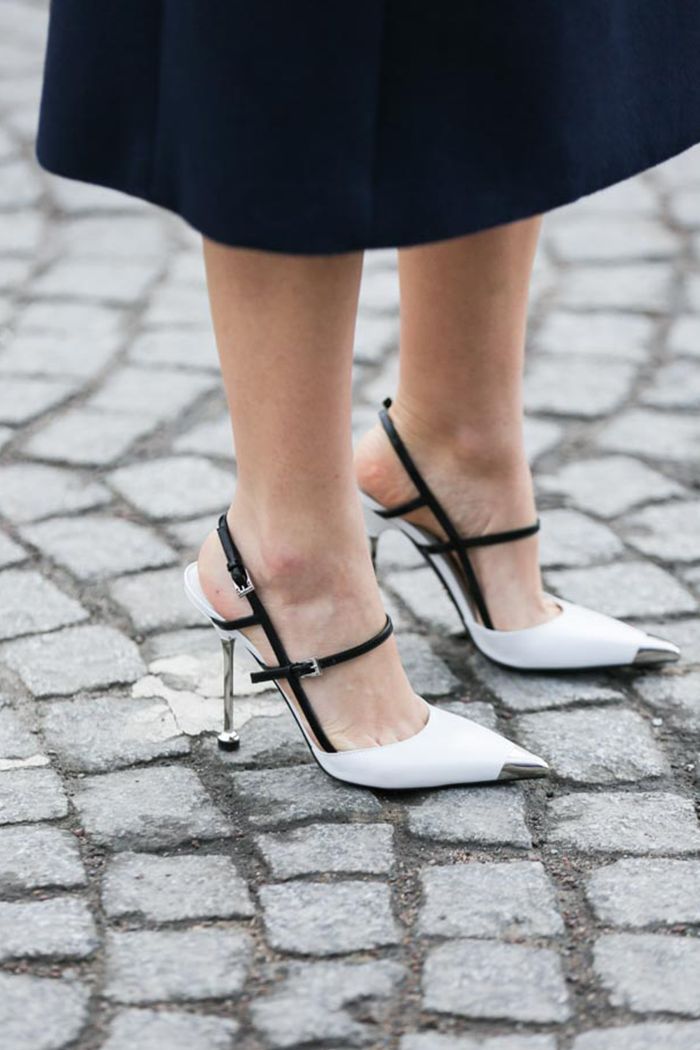 When taking a step, push from one step to the other using the inside edge of the feet.
When taking a step, push from one step to the other using the inside edge of the feet.
Strengthen Problem Areas
You have to flex and strengthen the foot, leg, and back muscles so that dancing in heels becomes exponentially easier. Think of the way you use your feet, what areas are the most painful?
If the arches and forefoot hurt the most, which is almost always the case, you have to perform point and flex exercises to warm up and strengthen these areas. If your leg muscles are killing you after dancing in heels for a few hours, add calf raises to your fitness repertoire. At the end of the calf raise set, stand on one foot, or raise one knee for a few seconds to build strength and improve your balance.
If your foot and heel feel excruciating after a few hours in heels, try these simple yet effective feet and heel exercises:
5 Feet and Heel ExercisesPlantar Stretch: This simple foot exercise minimizes muscle tightness in the feet and calves, relieving pain.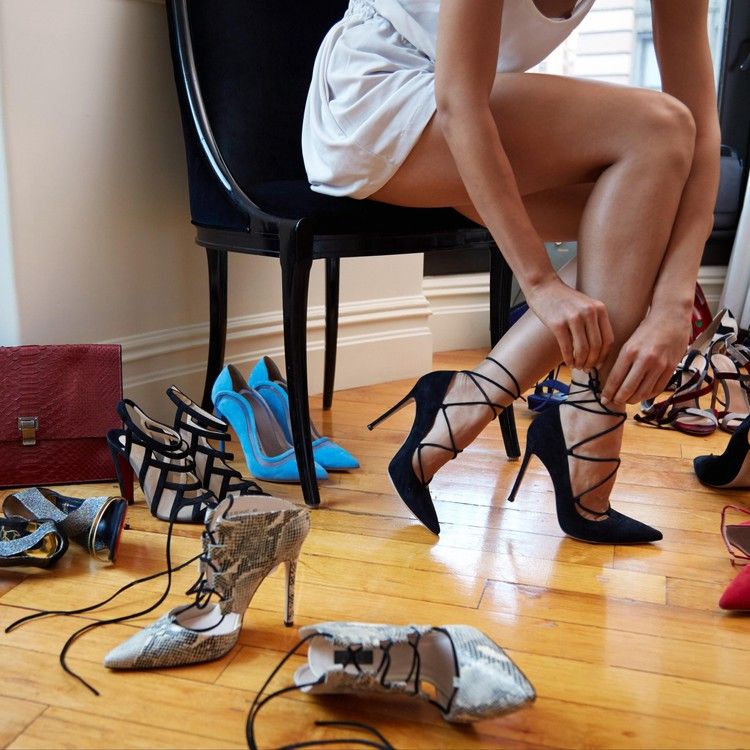
Lean with your hands flat against a wall. Straighten the knee of the affected leg while bending the other knee forward. Keep both feet flat on the ground by extending the leg. There should be a stretching sensation as you straighten your legs, hold for ten seconds then repeat.
Rolling Stretch: The best solution for painful arches!
Just place your foam foot roller on the floor or any type of round object you have on hand - golf ball, tennis ball, etc.
Sit on a chair then roll the ball around under the arch of your feet. Press the feet as you roll the ball around to massage the arches and loosen the stiff muscles. Do this for 2 minutes before switching to the other foot.
Marble Pickup: A great exercise that will flex and stretch tired, stiff foot muscles.
Gather several marbles or pebbles, a bowl, and get a chair. Sit on the chair, scatter the marbles or pebbles on the floor. Start picking up the marbles or pebbles by curling your toes and place these in the bowl.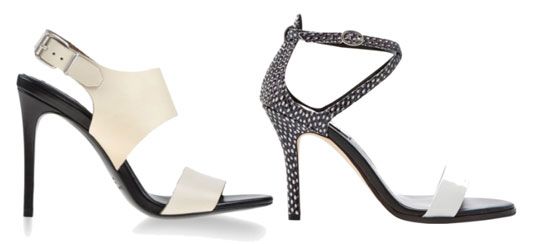 Repeat on the other foot.
Repeat on the other foot.
Heel Raises
This is a simple yet effective stretch that strengthens the calf muscles. Perfect if your legs and arches are always in pain after dancing in heels.
Stand against a chair, resting your hands on the back of the chair. Push yourself up by lifting your heels off the floor. Hold this position then slowly lower yourself down.
Foot Flexes
This gentle stretch relieves tension in the calves. You can either use an elastic stretch band or a towel for this foot exercise.
If you're using an elastic stretch band, sit on the floor. If you're using a towel, sit on a chair. Place the elastic band or folded towel under the arch of the foot. Hold on to the ends of the towel or elastic band and gently pull towards you. You should feel the calf muscles stretching. Hold for 5 to 10 seconds then repeat 5 times on each foot.
The way you stand, walk, and dance is changed the minute you wear dancing heels.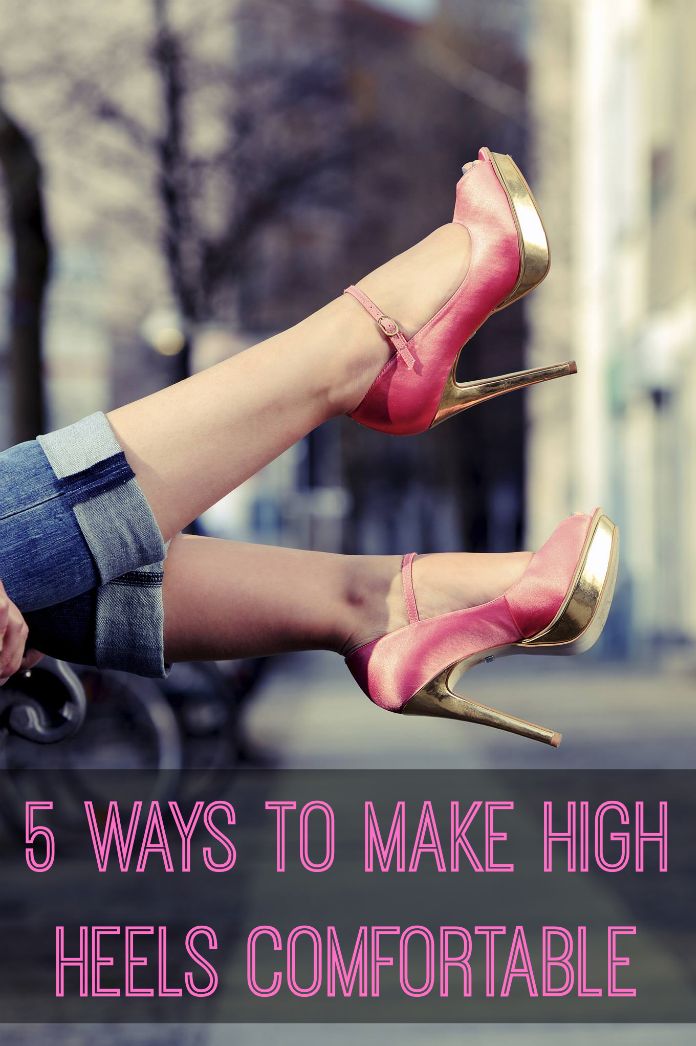 Yes, dancing in heels takes a while to get used to but practice makes perfect! Of course, it pays to invest in high-quality heels that are made for dancing, like Yami shoes. Our dance shoes are guaranteed comfortable, so comfortable you could dance in them 4 times longer than other heels.
Yes, dancing in heels takes a while to get used to but practice makes perfect! Of course, it pays to invest in high-quality heels that are made for dancing, like Yami shoes. Our dance shoes are guaranteed comfortable, so comfortable you could dance in them 4 times longer than other heels.
How To Dance Confidently In Heels
There’s a massive difference between being able to move in heels, and being able to slay in heels.
Knowing how to work your body, carry yourself with confidence, and connect with your audience is absolutely vital if you wanna perform Heels choreography like a pro.
Unfortunately – these things aren’t always taught in traditional Heels classes!
So, in this guide, I’m gonna give you all the tips and techniques you’ll need to learn the sexy Heels routines you’ve seen online or simply kill it at the club.
Since Heels choreography is all about the shoes, let’s get dressed from bottom to top!
For your heels, choose a bootie with a shorter heel – preferably something that laces up the foot.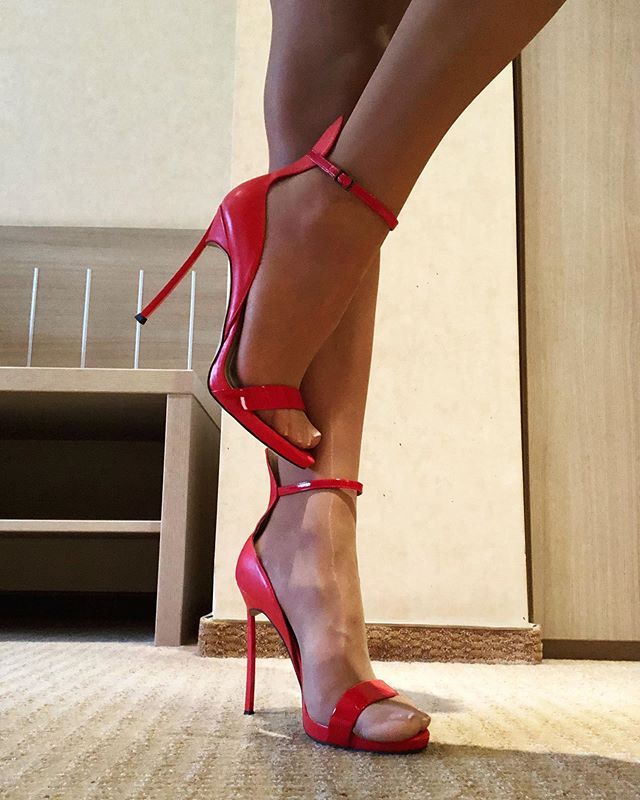
As a beginner dancer, comfort will be key to the learning process, so consider lace-up booties your go-to shoe.
They mold nicely to the foot and shouldn’t give you room to slide around.
Watch this video for more tips on shoe choices:
Next, the fit!
When you’re dancing in Heels, you usually want to look sexy to some extent, but again, comfort is key.
Skirts and dresses can work, but if you’re worried about flashing, throw on a pair of bike shorts underneath.
Otherwise, pants, cute little shorts, or leggings are great.
If your knees are exposed, consider wearing knee pads so that you can slide around on the floor comfortably.
If you have a full chest, be sure to wear a top that won’t lead to wardrobe malfunctions (body tape can also be your friend).
Lastly, hair!
Heels is a unique dance style in that it involves a lot of hair choreography.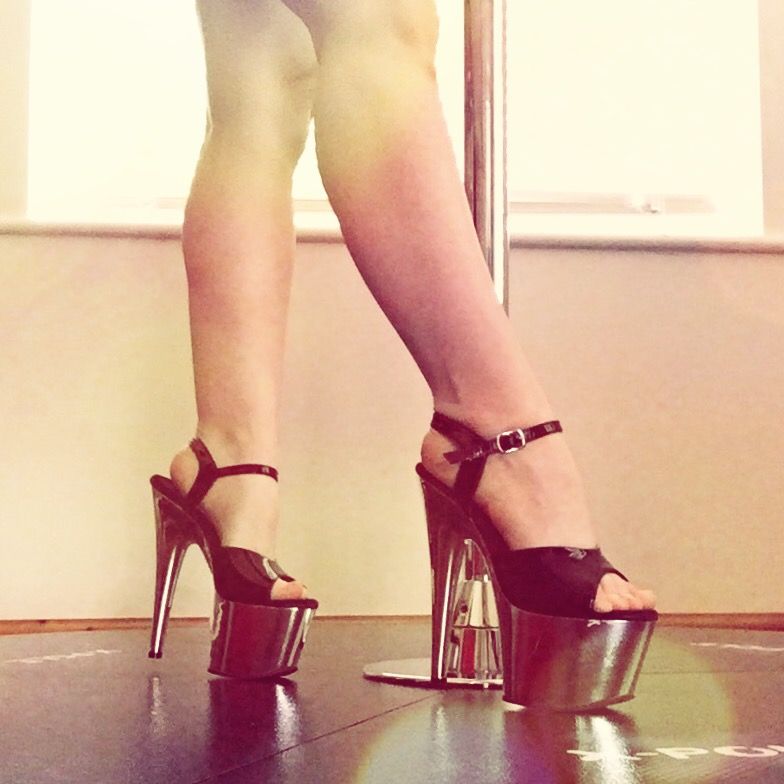
It’s common that you’ll be tossing your head around a lot in Heels class, so you’re welcome to wear your hair down to give your movement more drama.
But, if you’re totally new to Heels and you’re not confident with your routine, practice with your hair in a ponytail so you don’t have to worry about hair in your face just yet.
2. Important steps to take before you dance in heels
Before you even lace up those booties, you need to set yourself up for total success.
You should always stretch before a class or performance so that you can avoid injury and feel more loose and relaxed in general.
For Heels, you should obviously focus on stretching your toes, ankles, calves, and thighs – but don’t skimp out on the rest of your body!
Stretch your neck, back, shoulders and stomach muscles too.
You also want to strengthen your lower body and core before you start attempting those sexy routines you’ve probably seen on YouTube.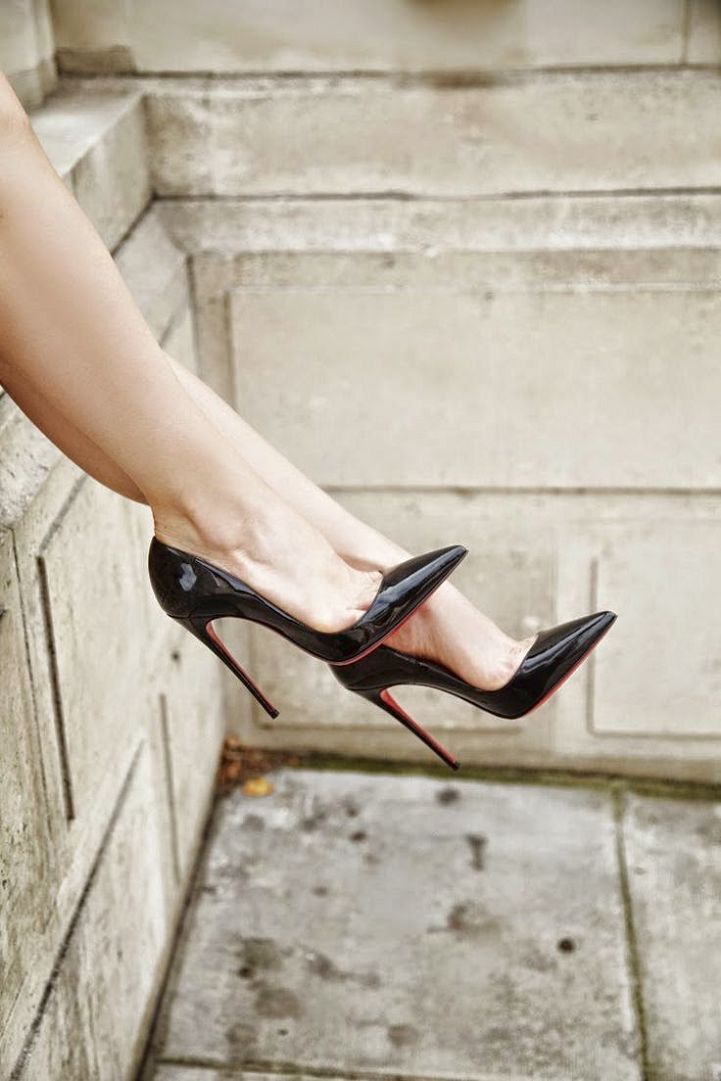
A great way to build up the muscles in your legs is to take some beginner Ballet or Barre classes!
The stronger your legs are, the less stress you’ll put on your ankles.
When you wear heels, your center of gravity is pushed forward, making it hard to balance your body and maintain good posture.
To counteract this effect, it’ll be important to roll your shoulders back and keep your chest up the entire time you’re dancing.
You’re also going to find that certain ways of standing are repeatedly used in Heels routines as a way of centering your body and balance.
Ever notice how great Heels dancers’ bodies seem to create an “s” shaped curve from head-to-toe when they’re both moving and standing still?
This all comes from a “Bevel” – aka the 1st position of Heels dance.
When you stand in a Bevel, you place all your weight on one base foot, and the other foot points at your base ankle.
To do it, squeeze your thigh muscles and ensure there are no gaps between your legs!
This will keep you securely balanced and strong.
Practice this Bevel stance in the mirror before you go to your first Heels class.
You’ll be returning to it a lot, so locking this posture into your muscle memory will make you feel a lot more confident when you eventually dance in front of others.
You can also learn more about posture, balancing, and beveling by clicking here.
Whether you’re on the dance floor or learning beginner Heels choreography, consider poses your best friend.
When you pause to pose, you not only give your audience something delicious to take in, you also give yourself a hot second to think about your next move/center your balance.
Here are a few go-to Heels poses to try:
- Looking over the shoulder – Stand with your feet apart, but pointed in one direction.
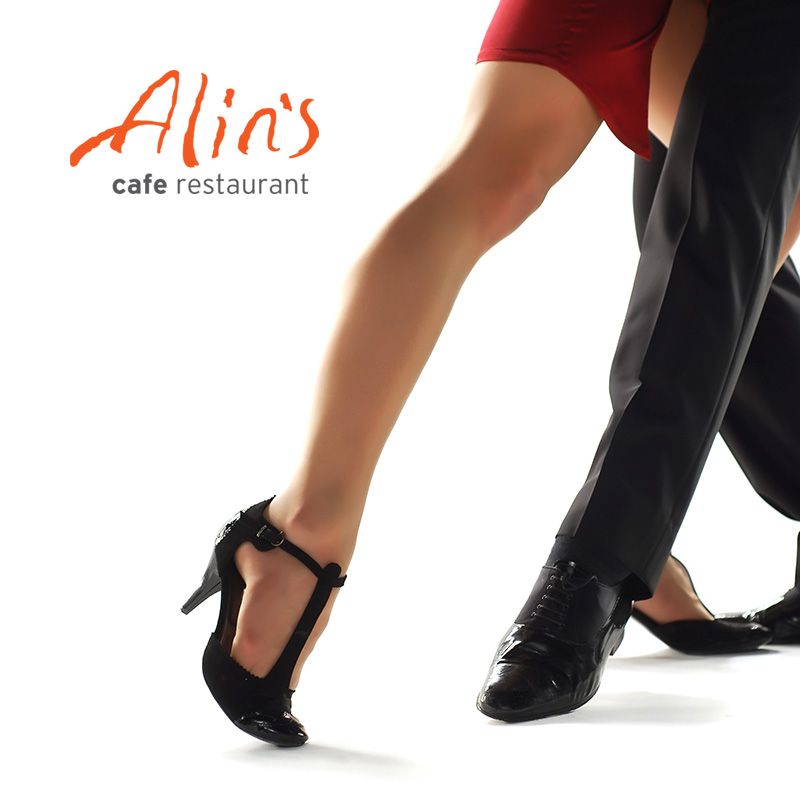 Your back should be facing the audience. Place one hand on the small of your back. Then, look over your shoulder at the audience. Be sure to keep your shoulders down, not up by your ears!
Your back should be facing the audience. Place one hand on the small of your back. Then, look over your shoulder at the audience. Be sure to keep your shoulders down, not up by your ears! - Big “S” – Remember that curvy shape we talked about? Here’s how to serve it. Stand with your feet apart, pointed forward. Push one hip out to the side. If your left hip is out, put your right arm straight up in the air (or vice versa). Take your other arm up and behind your head to grab the elbow of your straight arm. Allow your torso to lean slightly away from the outwardly pointed hip.
- That thing right there – Similarly to the Big “S”, you’re gonna stand with your feet apart, pointing in one direction, and lean one hip to the side. On whichever side your hip is popped out, you’re gonna take your arm straight out to the side and point at the floor with your index finger, as if there’s something beside you on the ground that you’re pointing at. The other hand should rest on your hip.
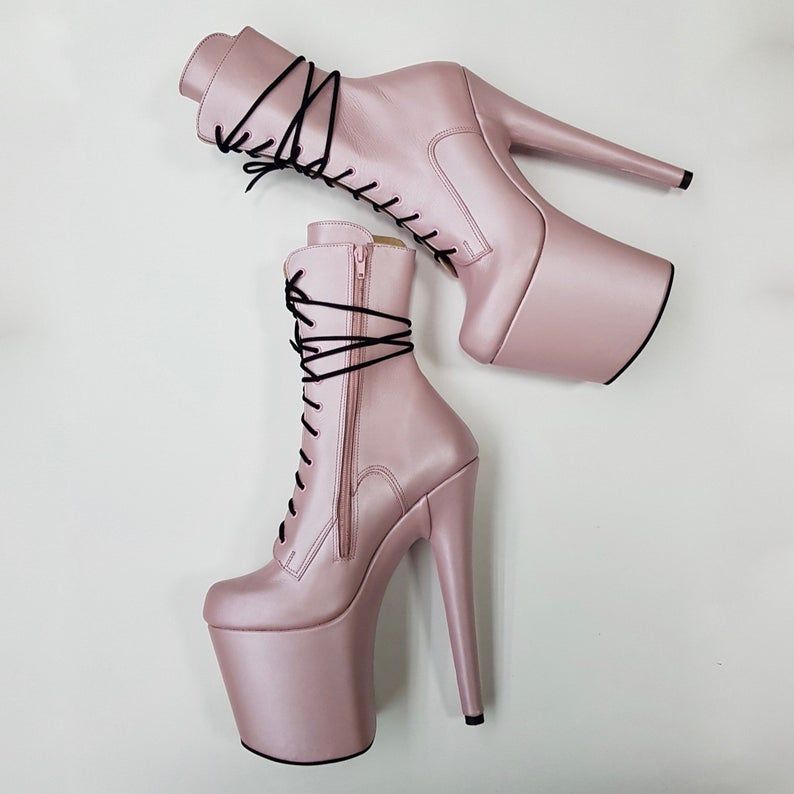
- Sideways glance – Stand sideways with one foot out in front of the other. Focus your weight entirely on the back foot and point the front foot so only your toes touch the floor. Place both hands on your hips and turn your head to look at your audience.
Wanna see more poses in action?
This posing tutorial will give you some ideas to practice!
5. Moving fast & slowNow that you’ve mastered a few ways of standing still, I wanna teach you how to move with confidence.
In Heels class, you’ll often be prompted to move very slowly.
These slow movements will be important for giving your audience something to connect with – like when you’re listening to a great song and the singer slows down at the bridge.
When you want to move slowly, imagine that you’re doing each move in a pool of thick liquid, like syrup.
You want to pretend that there’s resistance on all of your limbs that’s forcing you to move in slow motion.
When you wanna move fast, focus on energy and momentum.
Don’t sit back on the actual heel of your shoe at any point.
As you go from step to step, push off the ball of your back foot to make it to your next move.
When you’re dancing quickly, you can also use your arms to help you stay stable.
Allow them to stay relaxed and loose when you’re walking on the dance floor so that they can swing naturally!
The best Heels choreographers often spend more time perfecting their performance skills than coming up with crazy moves.
This is because Heels dance is all about seducing the person watching.
HOWEVER – a lot of people think being sexy/seductive means you have to be serious.
It’s actually the opposite.
If you ask most people what they want to see in the bedroom, it’s enthusiasm, joy, and comfort.
So that’s exactly what you wanna bring to your Heels performance!
Approach dancing in heels as a fun, playful experience where you get the opportunity to express yourself – not a challenge to be conquered.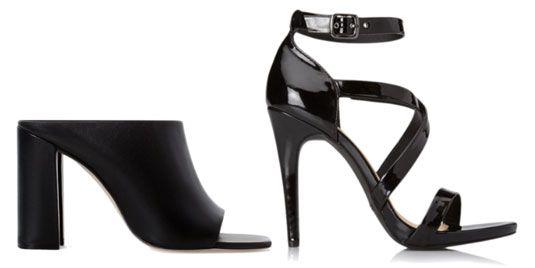
This sense of enthusiasm will read on your face and body when you’re dancing, and that’s how you become that person that nobody can stop watching.
Once you’ve got your mindset in the right place, you can focus on the story you’re telling as you dance.
When you’re learning a Heels routine, think of it like you’re practicing a poem or script that you plan to recite on stage.
If you simply try to memorize the words one-by-one, you won’t remember the overall text when it’s time to perform it.
Plus, your recitation will sound robotic and “rehearsed.”
Instead, you want to read through your script for comprehension.
You need to grasp what the story is saying as a whole so that when you recite the text, it won’t matter if you know it word for word.
Instead of remembering the singular words, you can focus your attention on changing the sound of your voice at certain moments, pausing for emphasis, and making eye contact as you speak.
Learn a dance the same way!
Listen to the lyrics and the sounds of the instruments, and figure out what the story is saying, not just what the singular moves should look like.
Then, when you dance, you can focus on executing your Heels choreography in a way that feels powerfully emotional – not robotic.
–
Hope these tips helped you on your Heels dance journey!
If you’d like to learn more techniques with step-by-step guidance, you should check out the Beginner Heels program on STEEZY Studio.
That’s where we’ll walk you through everything from body rolls to floorwork exercises to super sexy turns.
High heels and dancing | Useful articles and tips from the 🕺dance studio - Under Stand (Anderstend)💃 in Voronezh.
High heels have magical powers - we have known this for a long time.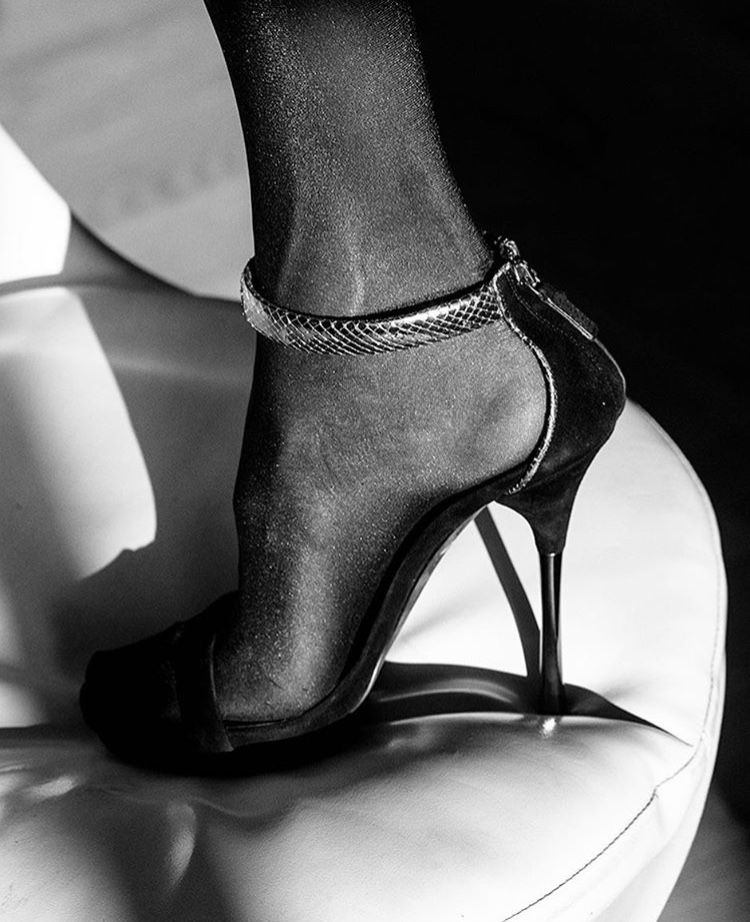 And the least that these indispensable female attributes are capable of is to make the leg longer and slimmer. Even heels with their measured clatter are able to calm someone down, and annoy someone else. A leg in a shoe peeking out of the cut of the dress can seriously excite, a broken heel can wildly piss off. And high heels as an attribute of the dance are sure to cause respect and a natural question, backed up by slippery parquet and dexterous movements: “How do they do it ?!”.
And the least that these indispensable female attributes are capable of is to make the leg longer and slimmer. Even heels with their measured clatter are able to calm someone down, and annoy someone else. A leg in a shoe peeking out of the cut of the dress can seriously excite, a broken heel can wildly piss off. And high heels as an attribute of the dance are sure to cause respect and a natural question, backed up by slippery parquet and dexterous movements: “How do they do it ?!”.
British and Chinese scientists, apparently, were haunted by slender female legs, so they decided to start studying the effect of “high heels”. Experts from the University of Liverpool and the University of Ningbo investigated the forces acting on the legs of the dancers. To do this, they needed six professional Latin American dancers and biomechanical measurements.
Scientists have confirmed that in the foot that dances barefoot, the pressure is evenly distributed between the toe and heel, but the higher the heel, the greater the pressure on the toes (surprise).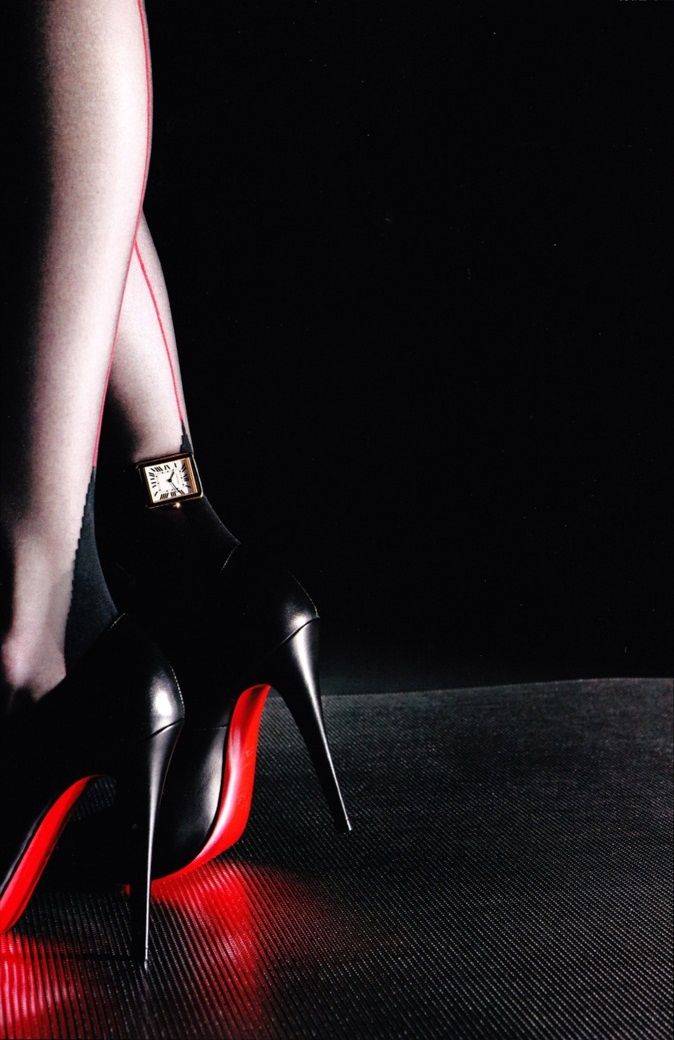 A standard 10 cm heel causes a pressure of 3 atmospheres. This can be compared to diving to a depth the size of a 7-story building.
A standard 10 cm heel causes a pressure of 3 atmospheres. This can be compared to diving to a depth the size of a 7-story building.
And if the difference between "barefoot" and "not barefoot" is obvious, then the difference in heel height does not matter. Even if the shoes are raised only five centimeters, a force of three atmospheres still acts on the fingers. Although dancers use a lower heel than usual after injuries.
And now for the consequences (scientists wouldn't be scientists if they didn't know how to scare the right way): in addition to the obvious discomfort of the foot, regular dancing in high heels will lead to plantar fasciitis - the heel will feel very uncomfortable and start to hurt. Improved shoe design can deal with this.
Solution
Today, dance shoes are already in the focus of attention of trainers and highly specialized researchers. For example, so that the legs do not turn out on slippery parquet with constant turns, it is equipped with a large number of straps that fix the ankle.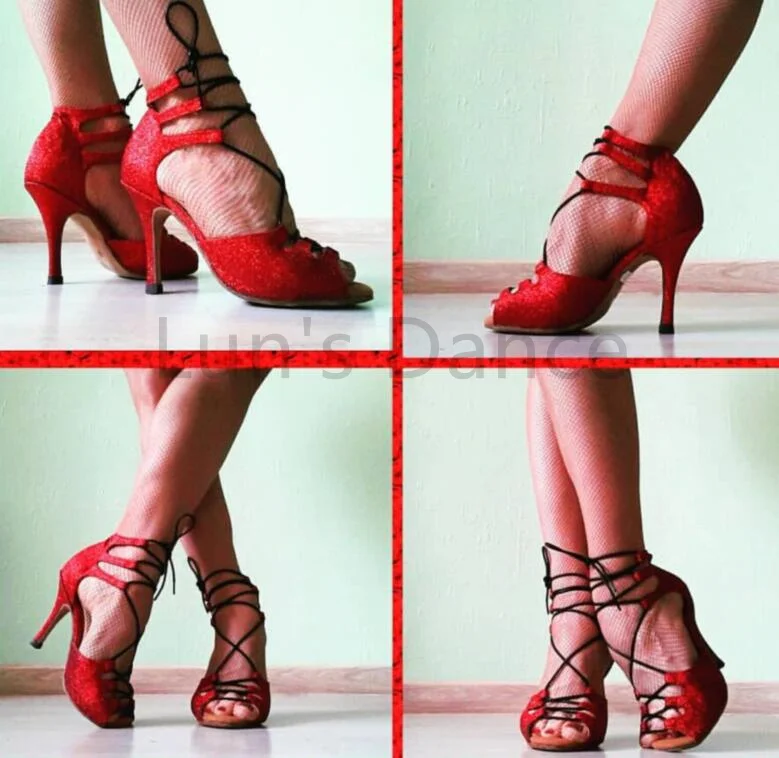 Dance shoes have a flexible sole and a metal core that supports the heel and prevents it from "breaking" during an incorrectly performed movement.
Dance shoes have a flexible sole and a metal core that supports the heel and prevents it from "breaking" during an incorrectly performed movement.
And designer Dana Davis, health problems forced her to enter the market of orthopedic shoes and be horrified: she was terrible as the tenth circle of hell. Then the woman undertook to correct this omission and, in a team with orthopedists, made a collection of anatomically correct and strategically sexy shoes, which professional dancers love to shiver in their ankles. The main trump card of her shoes is just the distribution of pressure between the heel and toe.
I must say that these medical problems, which are easily treatable, are nothing compared to the pleasure that dance floor heroes get from colorful performances and applause. But scientists sitting in laboratories hardly know this.
Author:
More articles:
How to walk in heels correctly: balance and willpower
Choose the right shoes
The ideal model of shoes with high heels is classic shoes with stilettos, long and thin heels, the height of which is no more than eight to ten centimeters, although this concept is purely individually and depends primarily on the size of the foot .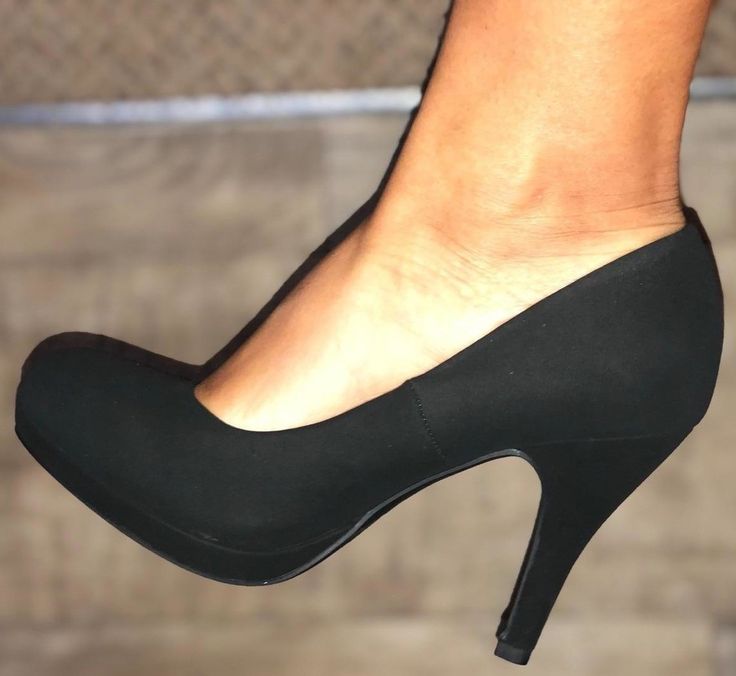 . With higher heels, fifteen or even seventeen centimeters high, even women who walk in high-heeled shoes all the time will not feel too comfortable - and such shoes won't add. At first glance, it may seem that walking in such shoes is not only uncomfortable, but almost impossible. In fact, even in the highest heels, you can learn to walk beautifully - all you need is constant practice and patience, writes thetrends.diary.ru.
. With higher heels, fifteen or even seventeen centimeters high, even women who walk in high-heeled shoes all the time will not feel too comfortable - and such shoes won't add. At first glance, it may seem that walking in such shoes is not only uncomfortable, but almost impossible. In fact, even in the highest heels, you can learn to walk beautifully - all you need is constant practice and patience, writes thetrends.diary.ru.
Not all high heel shoes are the same. Stand in shoes on a hard floor, straightening your legs, and try to stand on your toes, tearing your heels off the floor three to four centimeters. If you are unable to complete this exercise, then the heel height is too high and you should not wear such shoes. If you are not ready for such a heel height, then when walking, your knees will bend, the gait will be ugly. Do not forget about such an important detail as the size of shoes: any shoes should be loose enough so that if necessary there is enough space for insoles.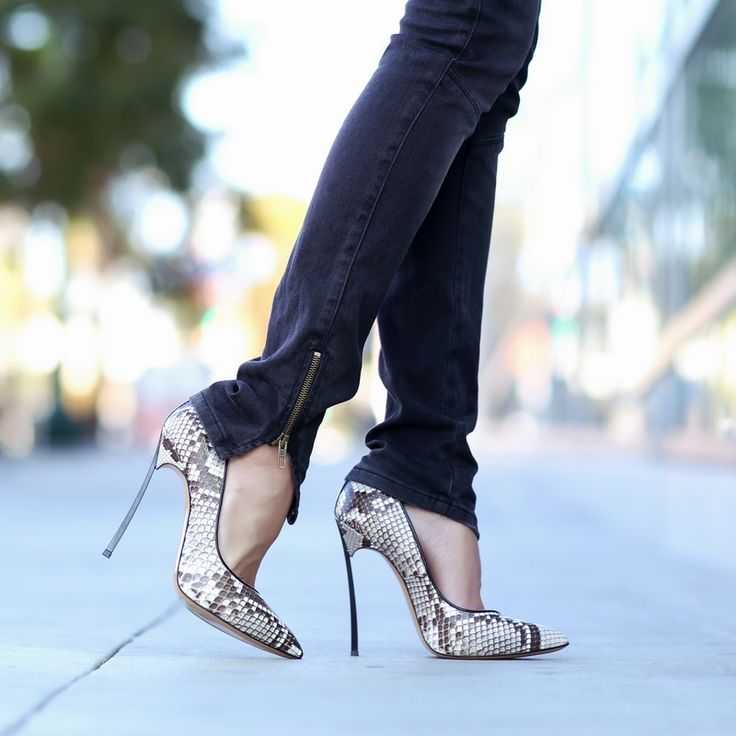
Women who constantly wear shoes with heels seven to ten centimeters high quickly learn to maintain balance in any situation. Shoes with heels change the angle of the foot, so the weight of the body is transferred mainly to the toe. Experience and skill are required to walk in high heels: the higher the heel, the greater the angle of the foot and the more weight is transferred to the heel and forefoot. The practice of walking in heels will allow the ankles to develop the strength needed to walk gracefully and smoothly in high heels.
How to learn to walk in heels
If high heels have entered your wardrobe for the first time, or if you have never liked high heels, it is better to get used to the new height gradually. First of all, take care of comfortable shoes with stable, better - square heels, do not rush things and, having no experience of walking in heels, immediately try on shoes with ten-centimeter stilettos. It is necessary to start learning to walk in heels with shoes, the heel of which is quite thick and low, gradually increasing the height of the heel over time. A heel height of five to seven centimeters will be ideal for a start. When learning to walk in high heels, make sure that the shoe you choose is as comfortable as possible. For example, a pair of high-heeled shoes with rounded toes will be much more comfortable for women who have not tried walking in high heels than a pair of shoes with pointed toes. In such shoes, you can walk a little more confidently and freely, without fear that the toes of the shoes will catch on each other. For the first experience of walking in high heels, classic closed shoes or sandals with a wide ankle strap are best suited - such models will provide the foot with maximum support and reduce the risk of injury. Shoes or sandals with miniature thin heels will help you learn to maintain balance. But it is better to refuse shoes that do not provide sufficient support to the legs (for example, sling shoes) - the risk of twisting or dislocating the leg is too great. To get used to the new height without sacrificing comfort and balance, you can start with high platform shoes.
A heel height of five to seven centimeters will be ideal for a start. When learning to walk in high heels, make sure that the shoe you choose is as comfortable as possible. For example, a pair of high-heeled shoes with rounded toes will be much more comfortable for women who have not tried walking in high heels than a pair of shoes with pointed toes. In such shoes, you can walk a little more confidently and freely, without fear that the toes of the shoes will catch on each other. For the first experience of walking in high heels, classic closed shoes or sandals with a wide ankle strap are best suited - such models will provide the foot with maximum support and reduce the risk of injury. Shoes or sandals with miniature thin heels will help you learn to maintain balance. But it is better to refuse shoes that do not provide sufficient support to the legs (for example, sling shoes) - the risk of twisting or dislocating the leg is too great. To get used to the new height without sacrificing comfort and balance, you can start with high platform shoes.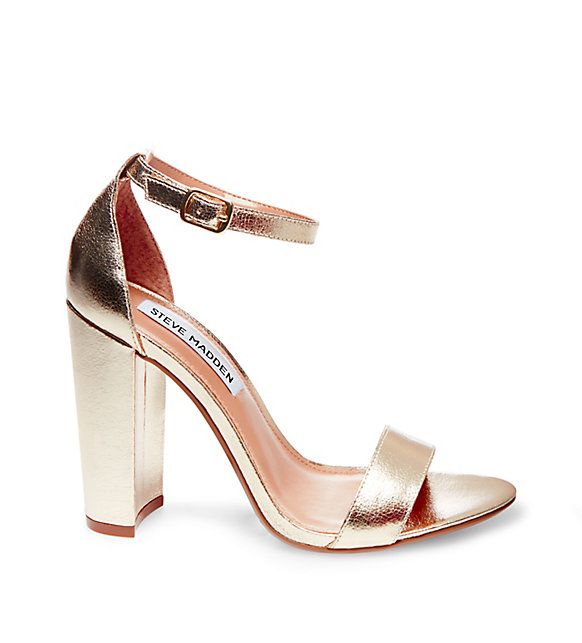 These shoes provide less support than chunky heeled ankle boots, and if the platform is narrow enough, they will be great preparation for walking in stilettos in the future.
These shoes provide less support than chunky heeled ankle boots, and if the platform is narrow enough, they will be great preparation for walking in stilettos in the future.
Practice is key. Practice
Walking for the first time in high heels is a completely new experience: walking in high heels is completely different from walking in flat shoes, and if you don’t perfect your gait, you risk getting more than an unpleasant sensation pain in the legs, but also damage to the ankle. By learning how to walk confidently and turn in your heels, you can try on those shoes in which you will need to go out. First of all, you need to remember that you need to start learning to walk in high heels slowly and gradually. After shoes with five-centimeter heels, it is almost impossible to feel as confident in shoes with nine-centimeter stilettos, so the main thing is practice and patience.
Manual
There are many ways and methods to learn how to walk beautifully in high heels, but in any case, the first step is to learn how to walk around the house in heels.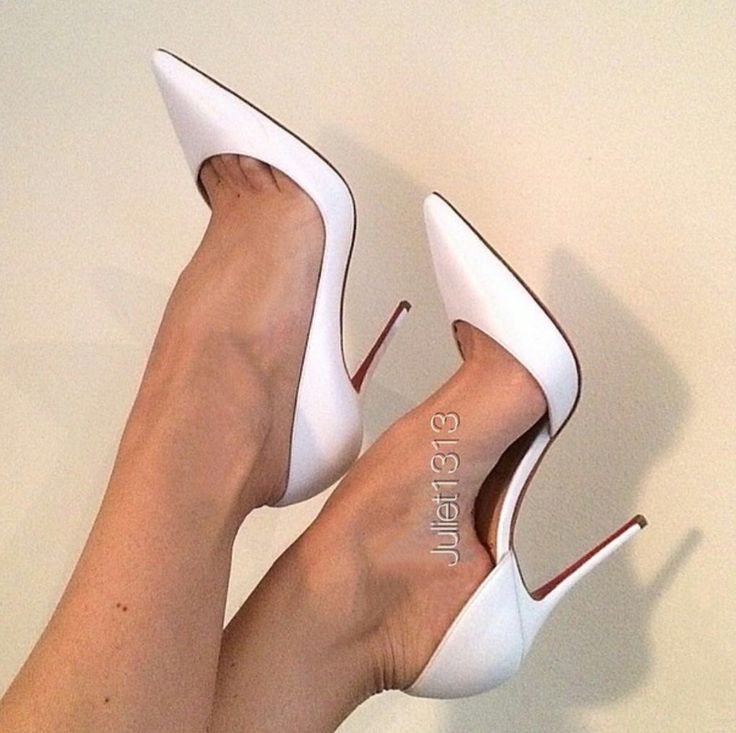 Most likely, after spending several hours in shoes with heels and doing housework at the same time, you will get used to the new height and stop paying attention to high heels, this will allow you not only to get used to the new height, but also to break in new shoes, make them more comfortable . Therefore, before you go to a nightclub or restaurant in high heels, be sure to wear shoes for several hours at home until the shoes are comfortable. The first step is to learn how to simply stand confidently in high heels. Stand in front of a full-length mirror, slowly turn back and forth - this little practice will help you not only evaluate your posture in high heels, but also get used to the height of the heels. Take a few steps in high-heeled shoes - if possible, on a hard floor without flooring or on a thin carpet. Dense, thick carpet on the floor can upset your sense of balance. When taking your first steps in high-heeled shoes, you should try to keep your legs straight, as close to each other as possible.
Most likely, after spending several hours in shoes with heels and doing housework at the same time, you will get used to the new height and stop paying attention to high heels, this will allow you not only to get used to the new height, but also to break in new shoes, make them more comfortable . Therefore, before you go to a nightclub or restaurant in high heels, be sure to wear shoes for several hours at home until the shoes are comfortable. The first step is to learn how to simply stand confidently in high heels. Stand in front of a full-length mirror, slowly turn back and forth - this little practice will help you not only evaluate your posture in high heels, but also get used to the height of the heels. Take a few steps in high-heeled shoes - if possible, on a hard floor without flooring or on a thin carpet. Dense, thick carpet on the floor can upset your sense of balance. When taking your first steps in high-heeled shoes, you should try to keep your legs straight, as close to each other as possible.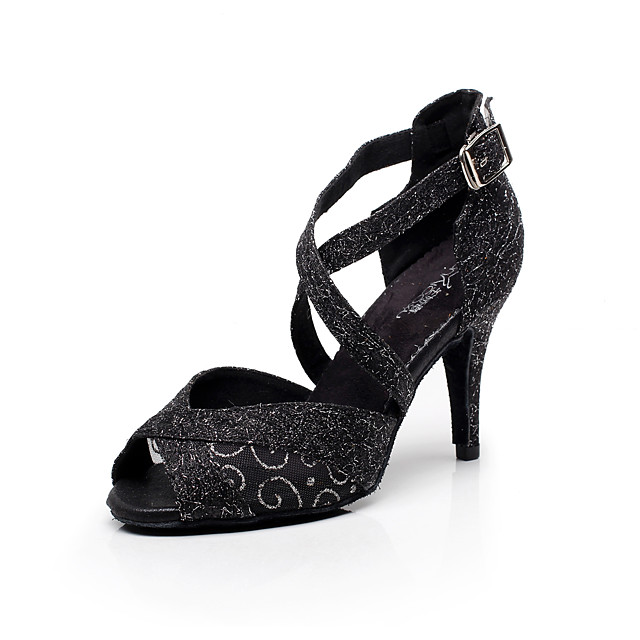
With each step, place your foot as straight as possible. Start practicing walking in high heels with slow, firm steps, paying attention to your posture with each step. Later, as the confidence and experience of walking in high heels develops, walking becomes much more natural. Continue walking around the room, changing directions and stopping. As soon as you feel confident in your movements, repeat the same on the other flooring, also starting with slow steps.
When practicing walking in high heels, do the same as when walking in normal shoes, for example:
Change direction: walk in different directions, stop, turn in place.
Try to walk in high heels not only on hard floors, but also on carpeted floors - it is quite possible that one day you will have to walk in high heels on slippery parquet.
If you are planning to wear high heels to a nightclub or party where you will have to dance, first practice the dance moves at home - in order to feel more comfortable in the future, it is best to work on the movements in advance - work out small steps in different directions and slow turns. .
.
Remember to wear high heels on stairs. When walking up or down stairs in high heels, always stay as close to the railing as possible, holding onto it while moving slowly and gracefully. When going down the stairs, place your entire foot on each step, both the sole and the heel of the shoe, and when going up - only the sole, but not the heel.
Walking in high heels at home is much easier than on the street - both soft flooring and a perfectly flat hard floor surface greatly facilitate the task of walking in high heels, and the slightest roughness of the asphalt can significantly impede movement. To learn how to walk in heels, try walking outdoors as well as indoors, or in a supermarket where a cart will help you balance in high heels.
How beautiful it is to walk in heels
When practicing walking in high heels, you need to remember a few basic rules, following which will make your walk confident and smooth.
To begin with, remember that the legs should not be bent at the knees - the legs must be kept straight and placed as close to each other as possible. The foot must be directed strictly forward, rearranging the feet so that they walk “in one line”.
The foot must be directed strictly forward, rearranging the feet so that they walk “in one line”.
When stepping, first lower your heel and then your toe, transferring body weight to the toe quickly and smoothly. Take only smooth, even steps. If your gait is unsteady, try shortening your stride.
Learn from the supermodels: keep your chin up when you practice walking in heels. Hands can be spread for balance.
If you don't feel comfortable in high heels, try to avoid "difficult" surfaces - don't try to walk on wet, slippery ground, sand, gravel, grass, icy pavement.
If you lose your balance in high-heeled shoes and start to fall, do not try to regain your balance - if you fall, you get off with minor bruises and embarrassment, then trying to maintain balance when falling can lead to a dislocation or even a fracture of the ankle.
Even the most expensive and high-quality high-heeled shoes are uncomfortable if you walk in them all the time.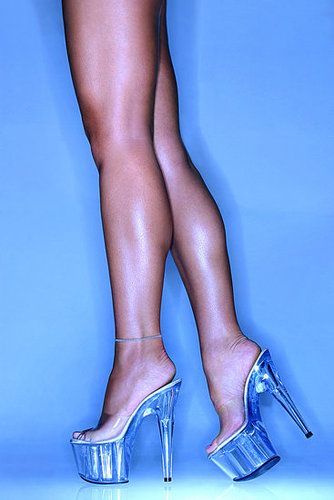 Whether you can walk in heels or are just learning, do not walk long distances in high heels - and if you feel pain in your ankle or foot, remove your shoes immediately.
Whether you can walk in heels or are just learning, do not walk long distances in high heels - and if you feel pain in your ankle or foot, remove your shoes immediately.
Building Endurance
Try to stand in front of a mirror and walk in a straight line with one foot in front of the other. Move away from the mirror and, approaching it, follow the movements of the legs and body. When trying to walk in heels, make sure your legs are straight, don't slouch, and keep your back straight. Try wearing high-heeled shoes to lift various objects from the table, chairs, floor, while keeping your knees closed.
Practice wearing high heels not only at home, but also on the street - for example, going shopping at the nearest store. The experience of walking in heels, not only on the soft surface of the carpet, but also on uneven pavement, will help you quickly develop a sense of balance and confidence in your gait. When walking on a soft surface - for example, on grass or on the ground - do not transfer the main weight to the heel, otherwise the heels will sink into the ground and you risk falling.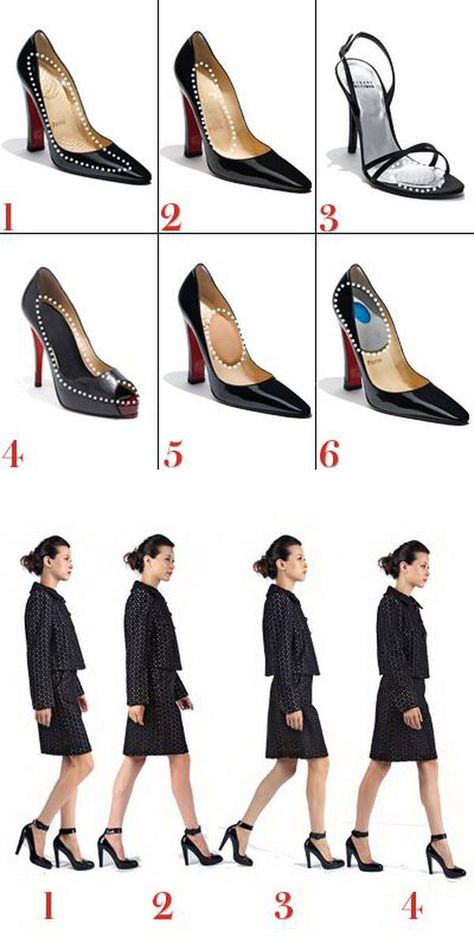 In addition, putting weight on the heel in such cases can lead to damage to the heel.
In addition, putting weight on the heel in such cases can lead to damage to the heel.
When practicing walking in mid-heeled shoes, try placing your heel first and then your toe as you step, shifting the bulk of your weight from heel to toe. Thus, the gait will become easier and more graceful.
By placing less heel pressure, you lift your foot slightly, increasing ankle strength and developing a sense of balance and optimal weight distribution. By constantly monitoring the transfer of weight to the toe, you can easily learn to wear shoes even with the highest heels.
If you want to learn how to walk in high heels, but don't want to spend money on shoes that may later prove uncomfortable and unsuitable for walking, try borrowing shoes from a friend for a while. Make sure your shoes are the right size - the wrong size of shoes not only causes discomfort, but also spoils the gait.
When learning to walk in heels, choose shoes with wide toes and thick, stable high heels that make walking as comfortable and easy as possible.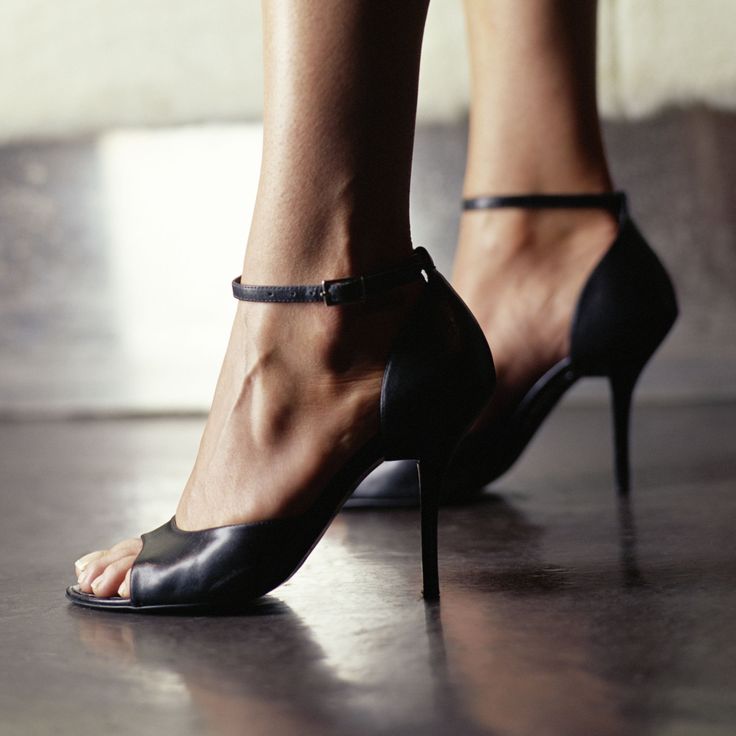 Choose shoes that suit your tastes and requirements - you should not follow the current trend, as fashion trends are constantly changing, but heel heights are not. Remember that ankle boots and boots with heels provide maximum support for your legs. Once you learn to walk in thick heels, you can easily walk in stilettos. And additional comfort when walking will be provided by soft silicone insoles.
Choose shoes that suit your tastes and requirements - you should not follow the current trend, as fashion trends are constantly changing, but heel heights are not. Remember that ankle boots and boots with heels provide maximum support for your legs. Once you learn to walk in thick heels, you can easily walk in stilettos. And additional comfort when walking will be provided by soft silicone insoles.
To get used to the tilt of the foot caused by high heels, try the following exercise: sit with your feet on your toes and lift your heels. This exercise will help you get used to the new angle of the foot and make walking in high heels easier. Try standing and walking around the house on your toes - this exercise develops ankle strength and balance, helps you learn to transfer weight from heel to toe, thereby making it easier to walk in heels.
Practice walking in high heels by going up and down stairs and stepping over objects. A simple exercise will help you maintain balance in any situation - you just need to stand on one leg for some time, periodically changing legs.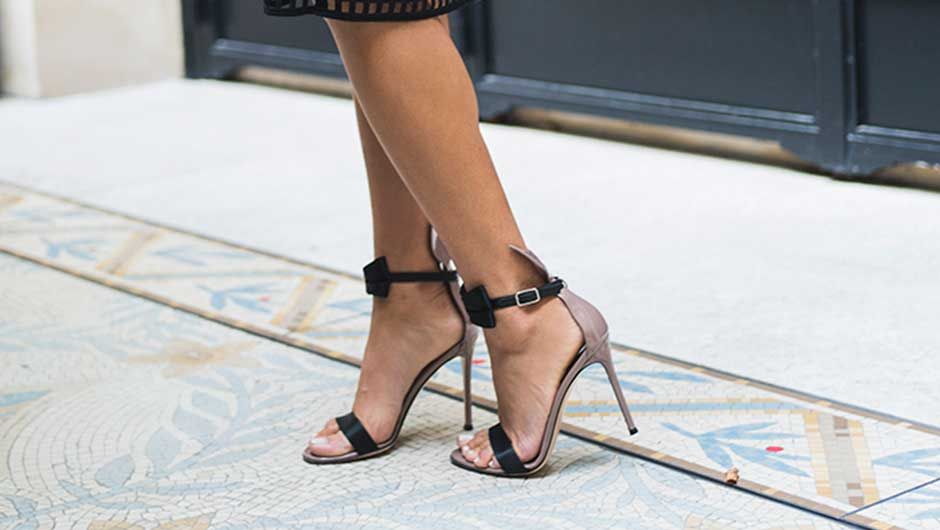
Even if the unusual height of the heel has led to pain in the feet, it is not recommended to take off the shoes while out of the house. Give your legs a rest by sitting down for a while.
“Baby” steps
It is believed that learning to walk in high heels is much more difficult than learning how to take your first steps for a child - therefore, before trying on high-heeled shoes, you need to start with small steps.
When learning to walk in heels, first try taking small, slow steps without bending your knees more than usual. Almost immediately, you will notice that the height of the heel makes your steps shorter. The higher the heel, the shorter the stride will eventually be.
Lower your heel before lowering your toe—do not lower your toe and heel to the floor at the same time. Once your weight is on the balls of your toes, smoothly shift your weight forward as if you were walking on your toes.
Keep your feet as close as possible, runway models will often place one foot slightly in front of the other to make the hips sway enticingly, but this runway walk requires extra training.